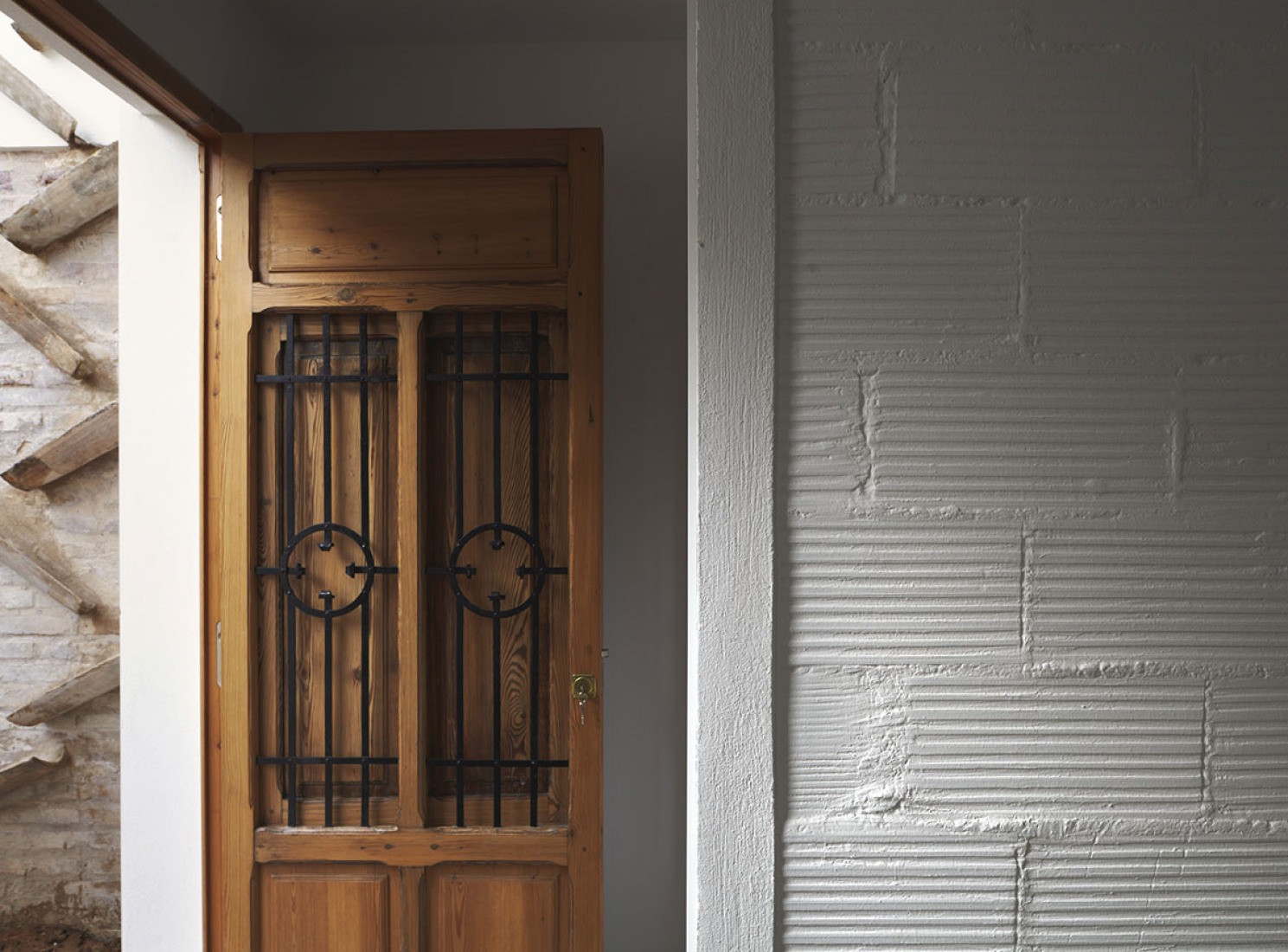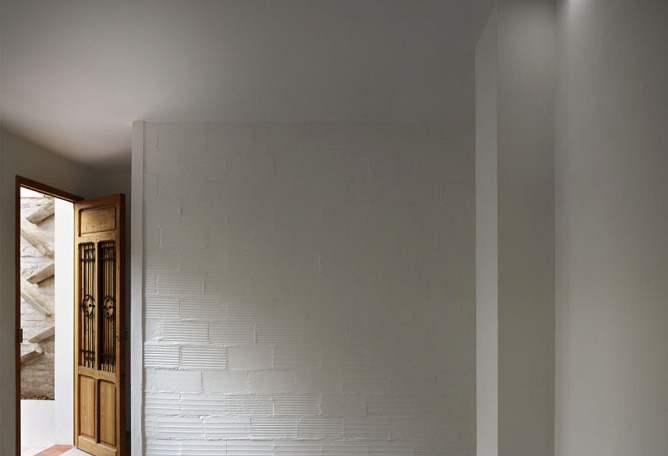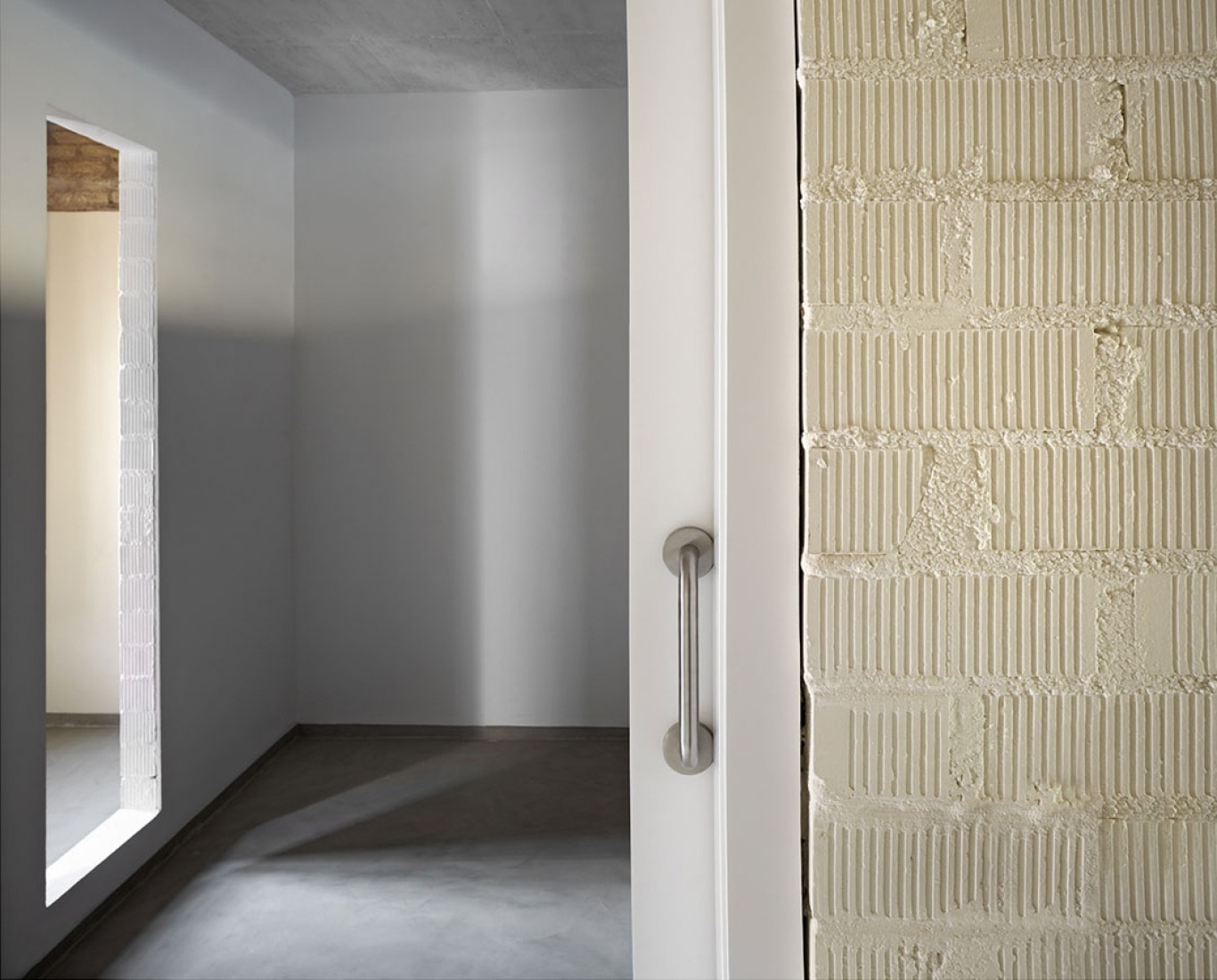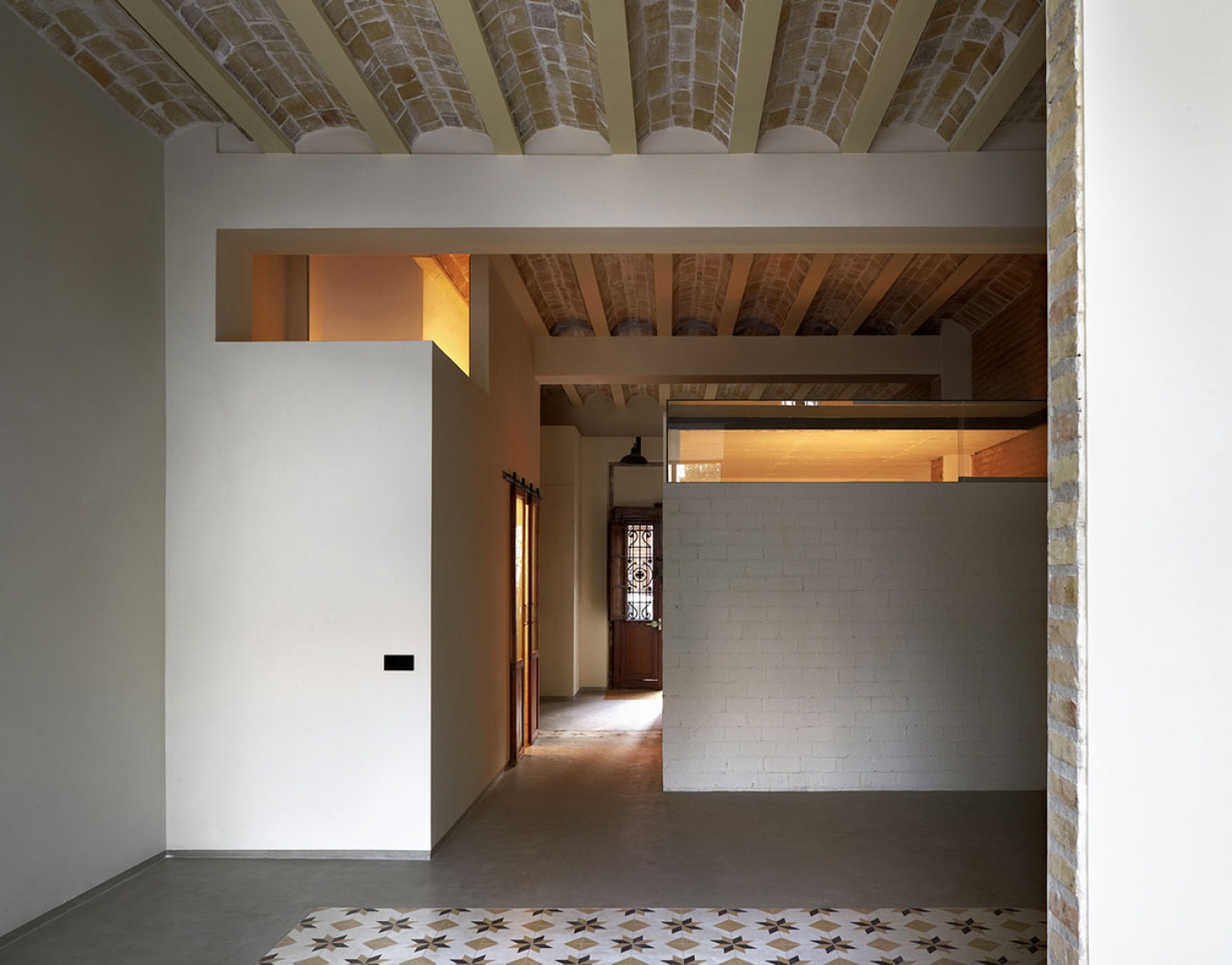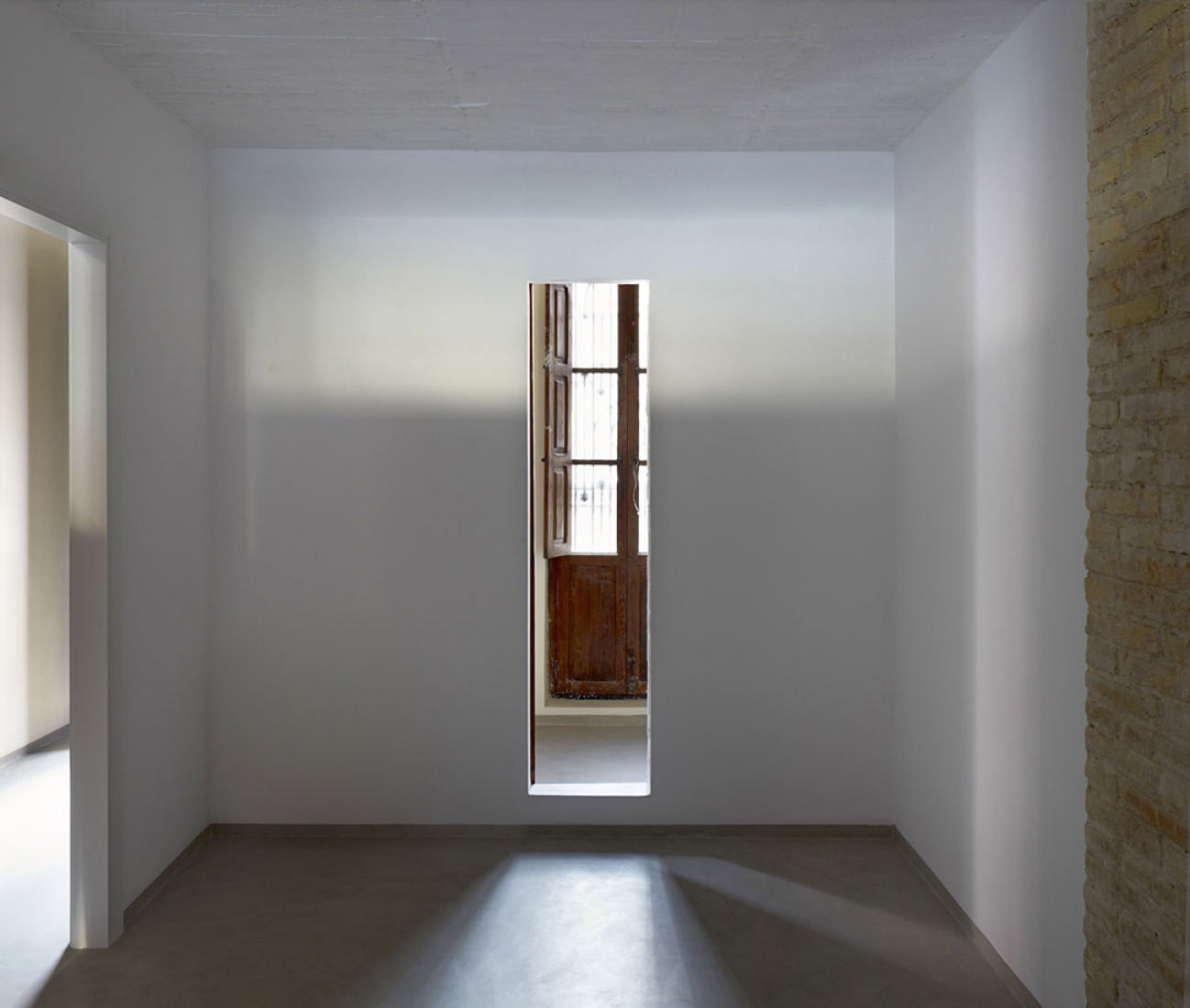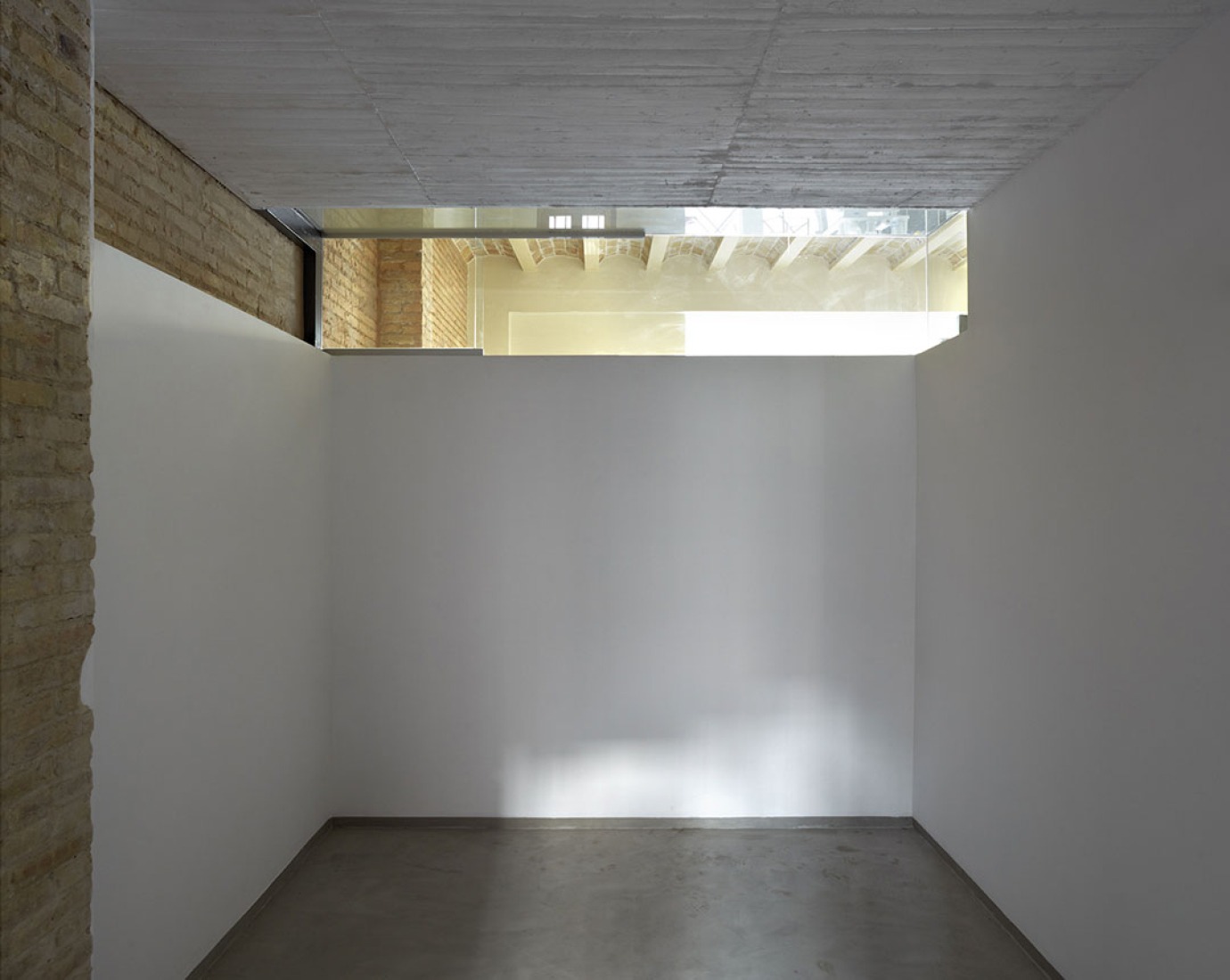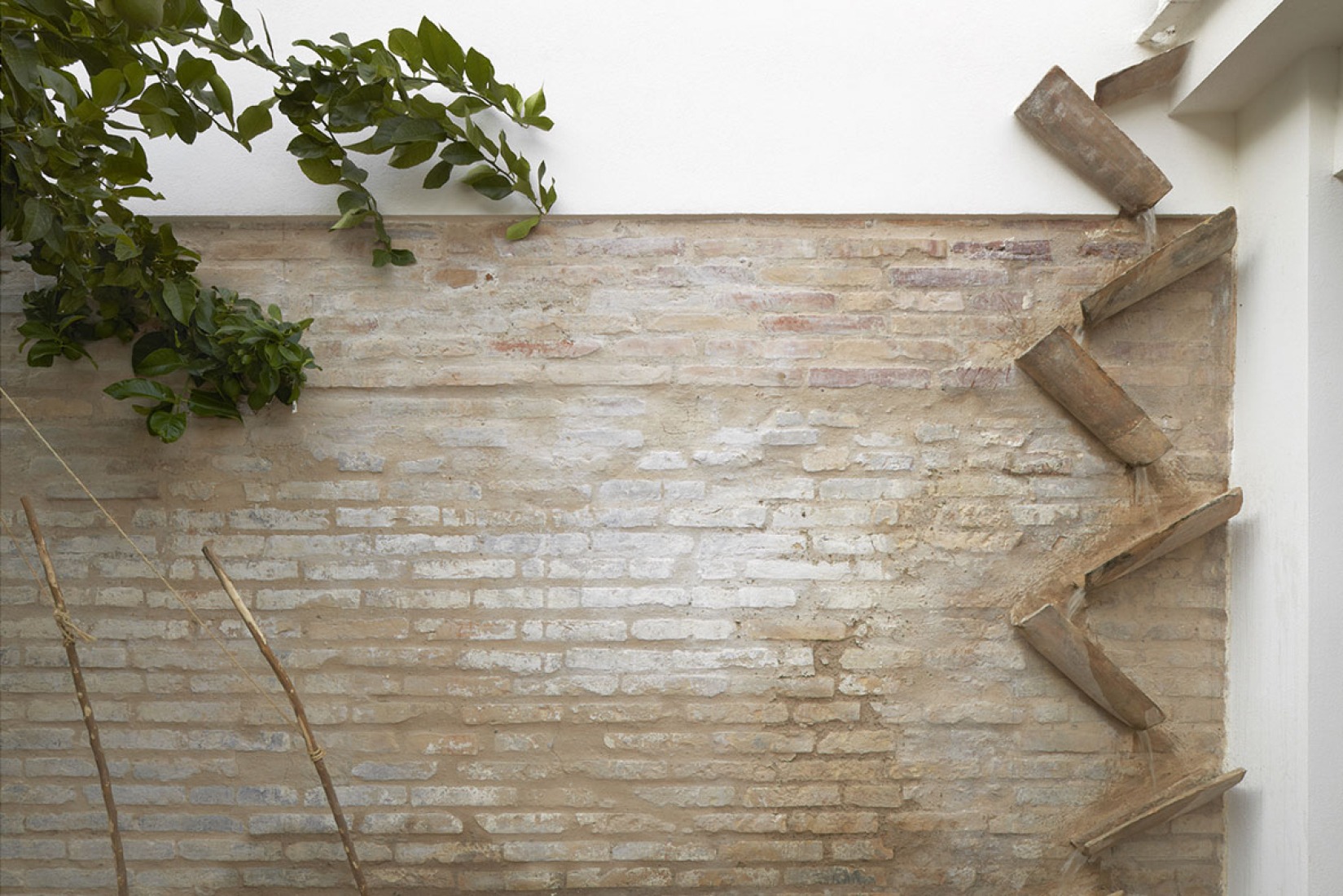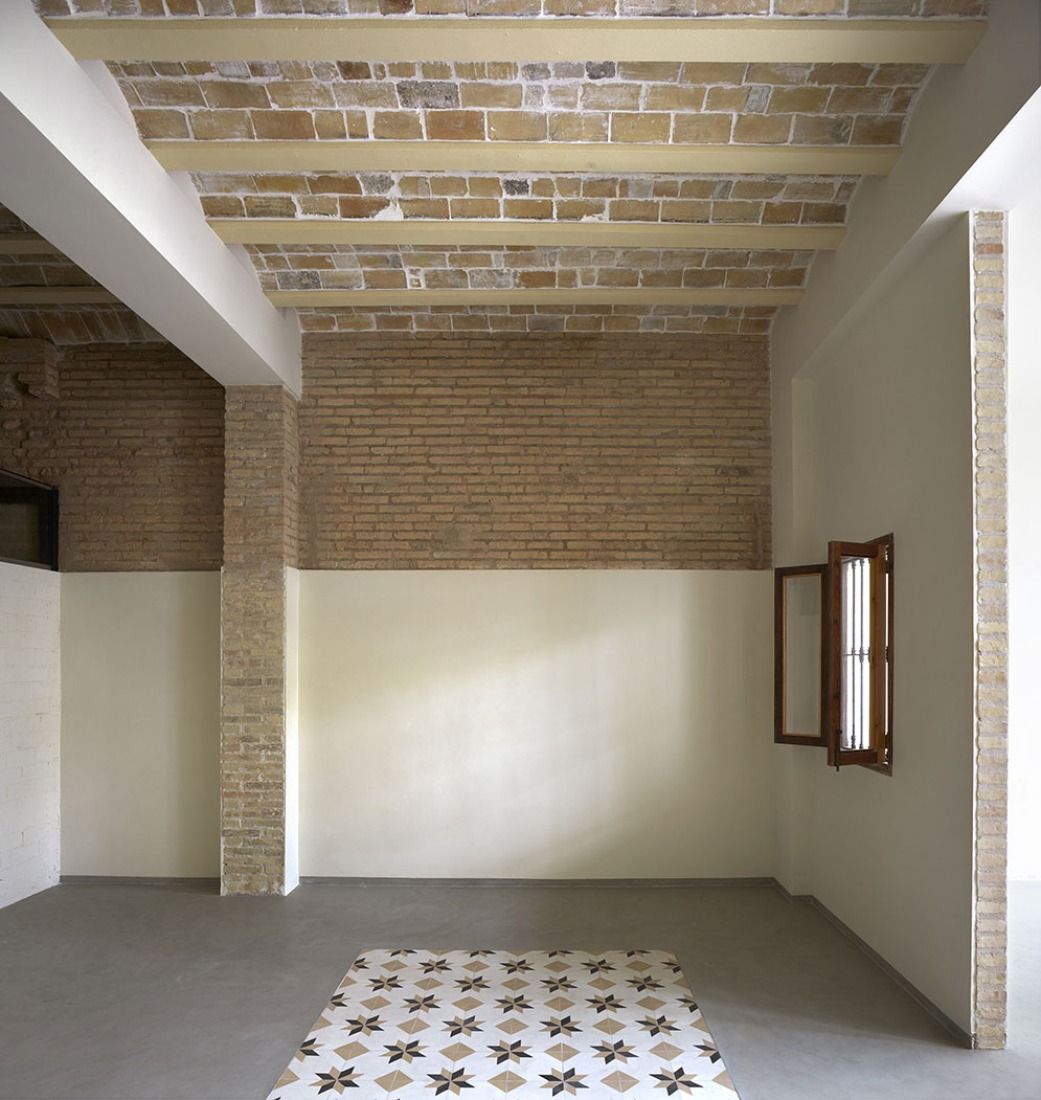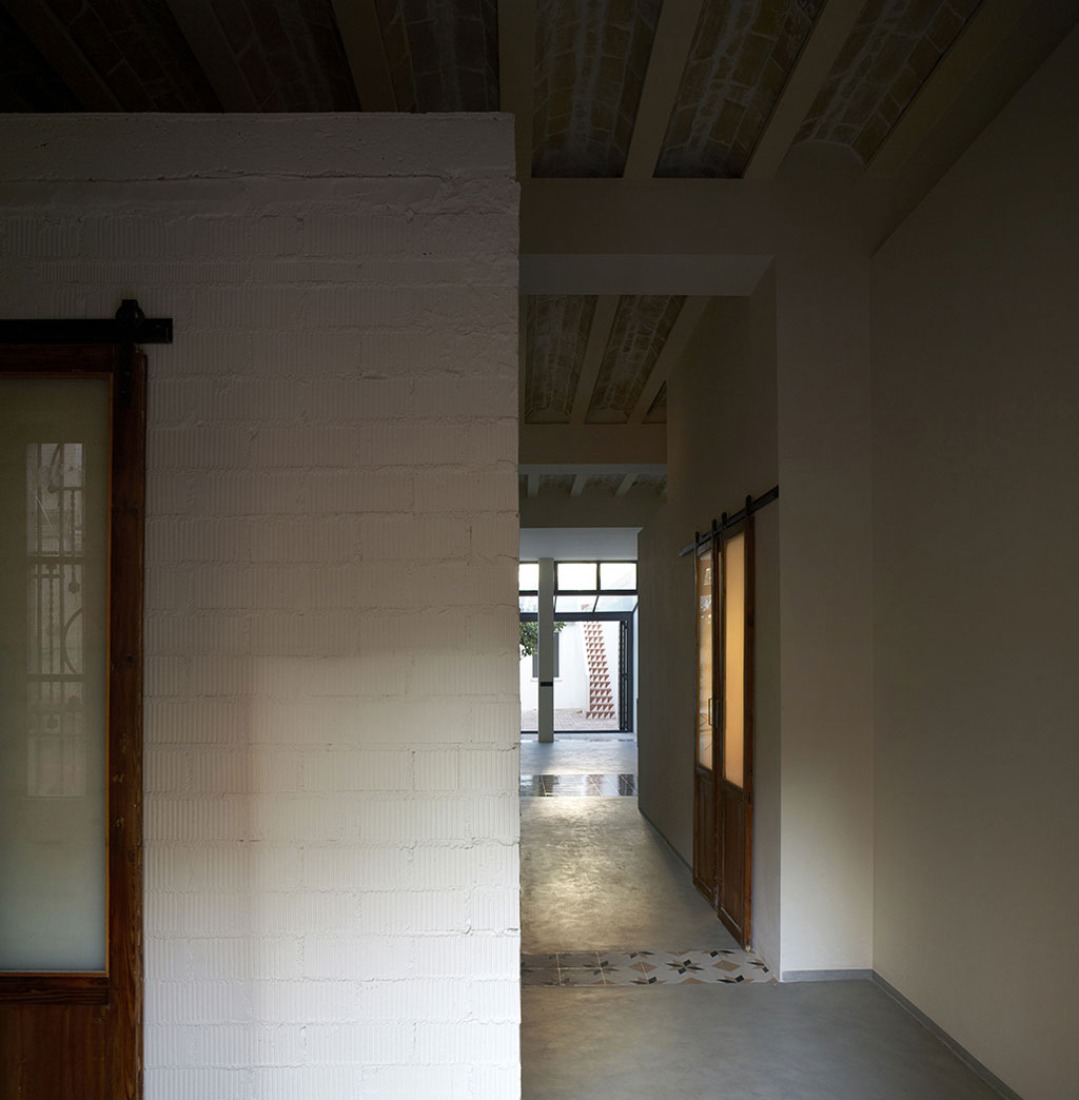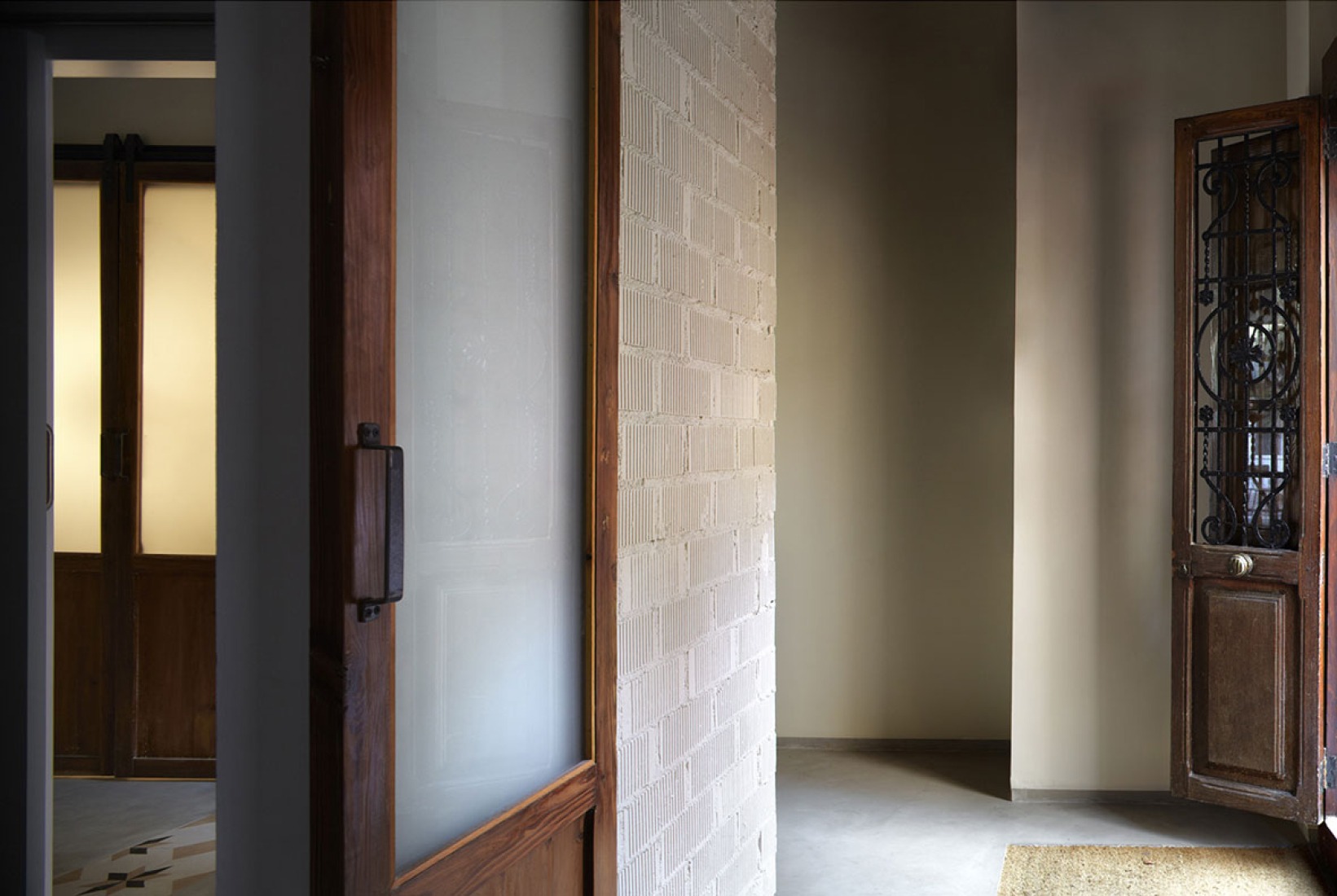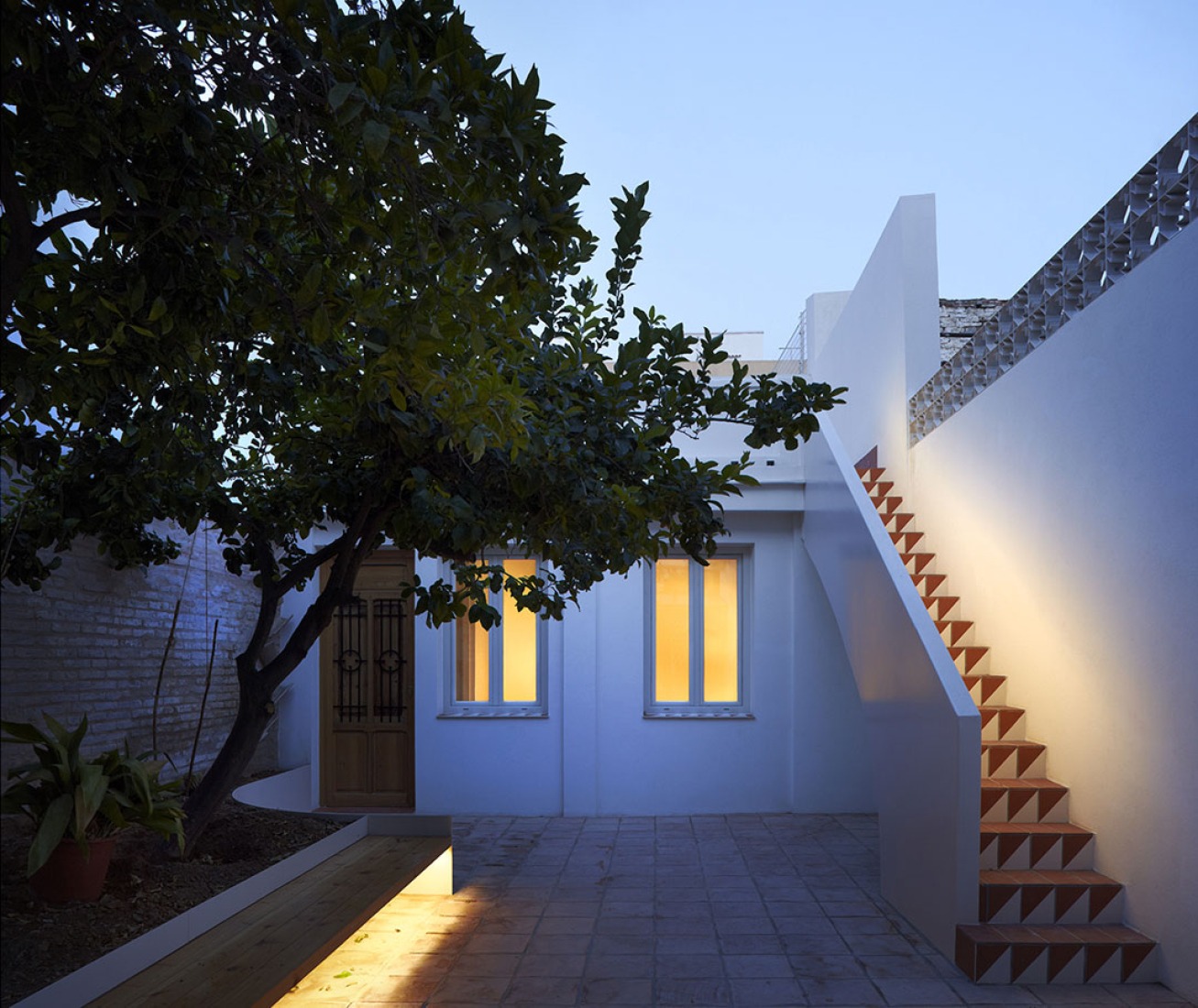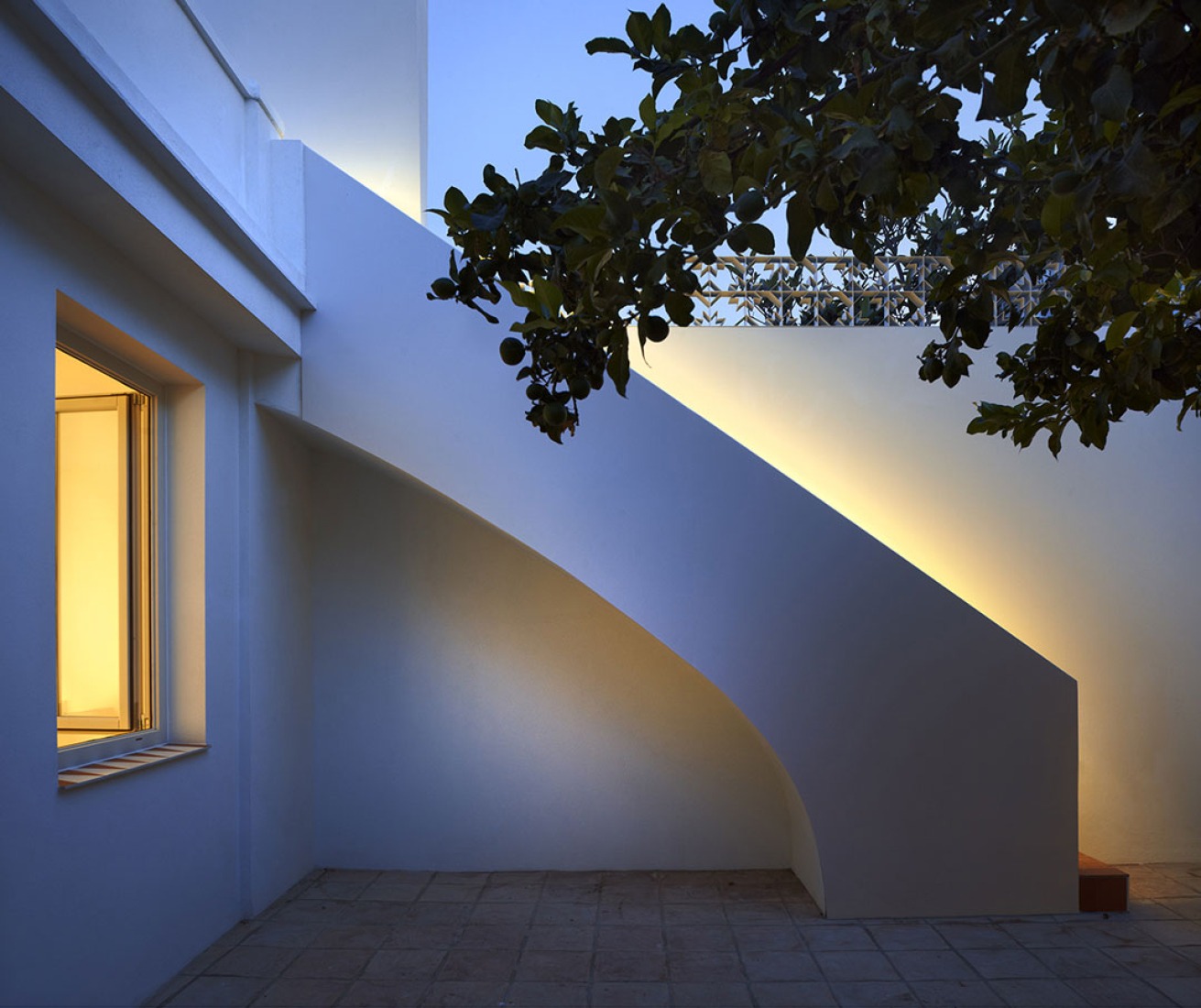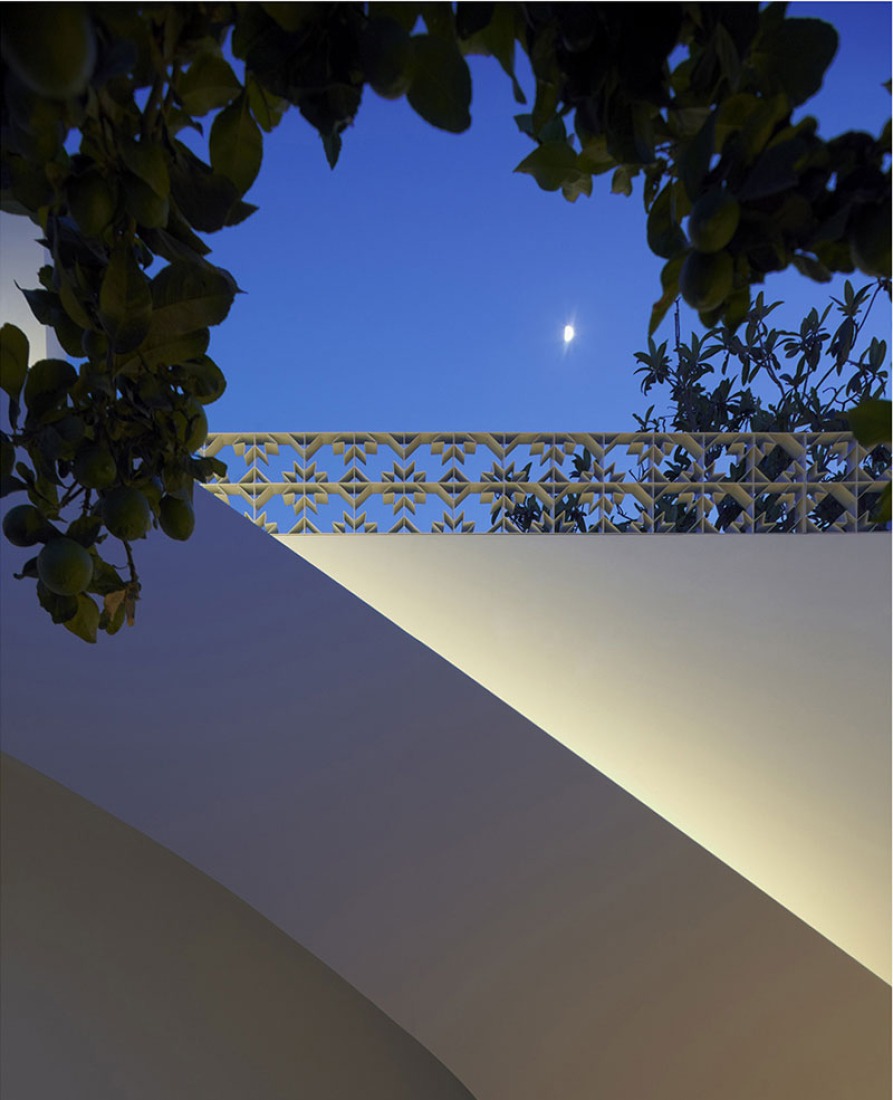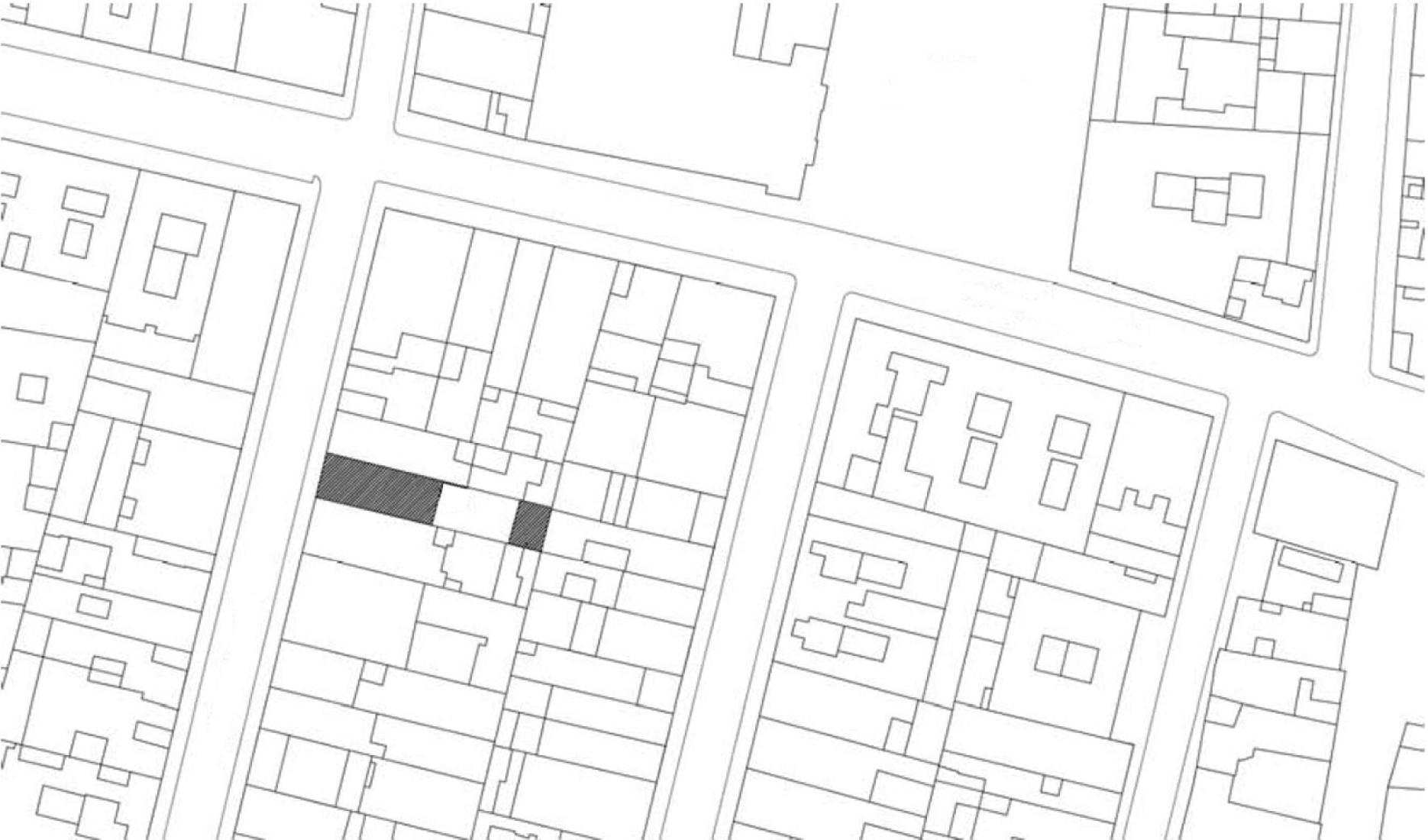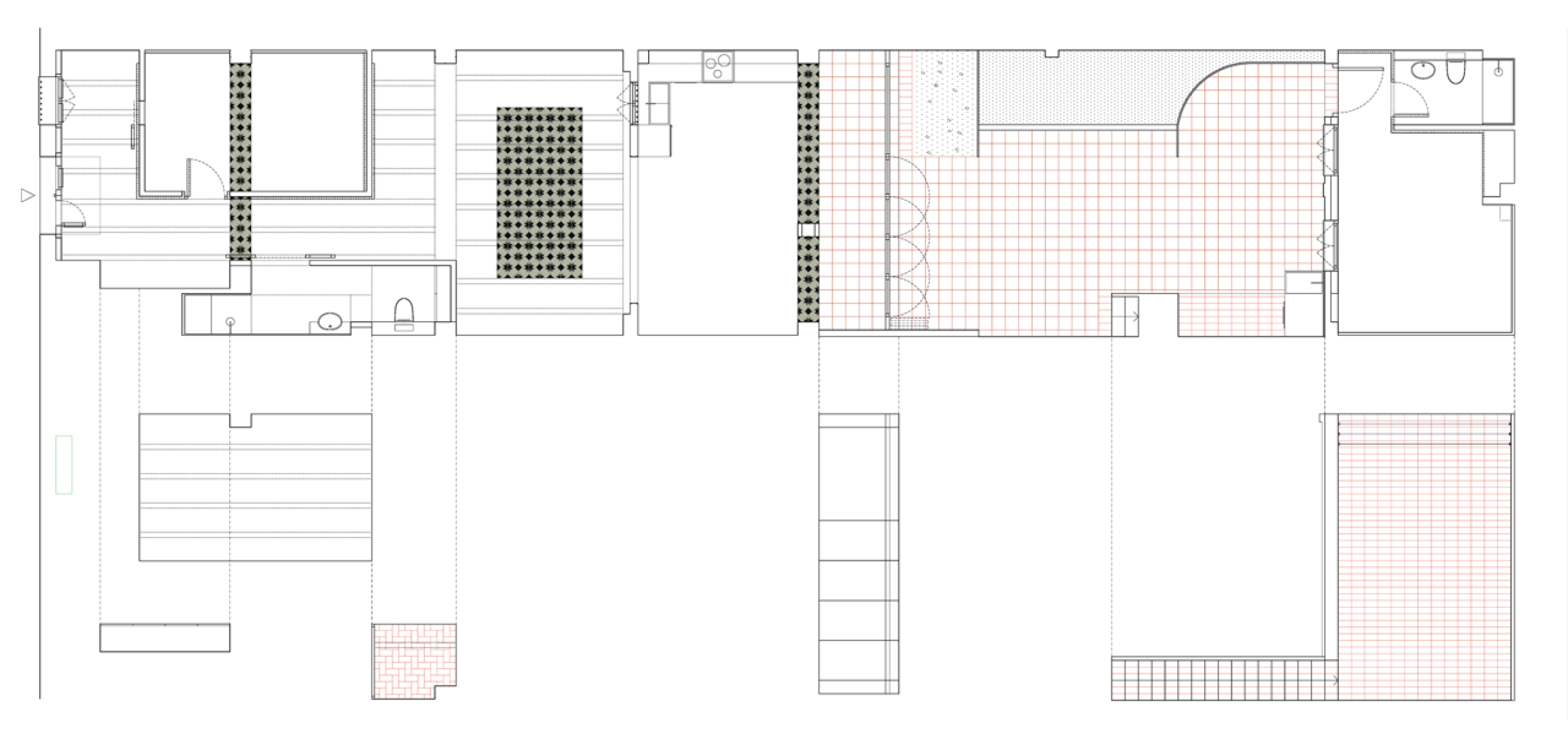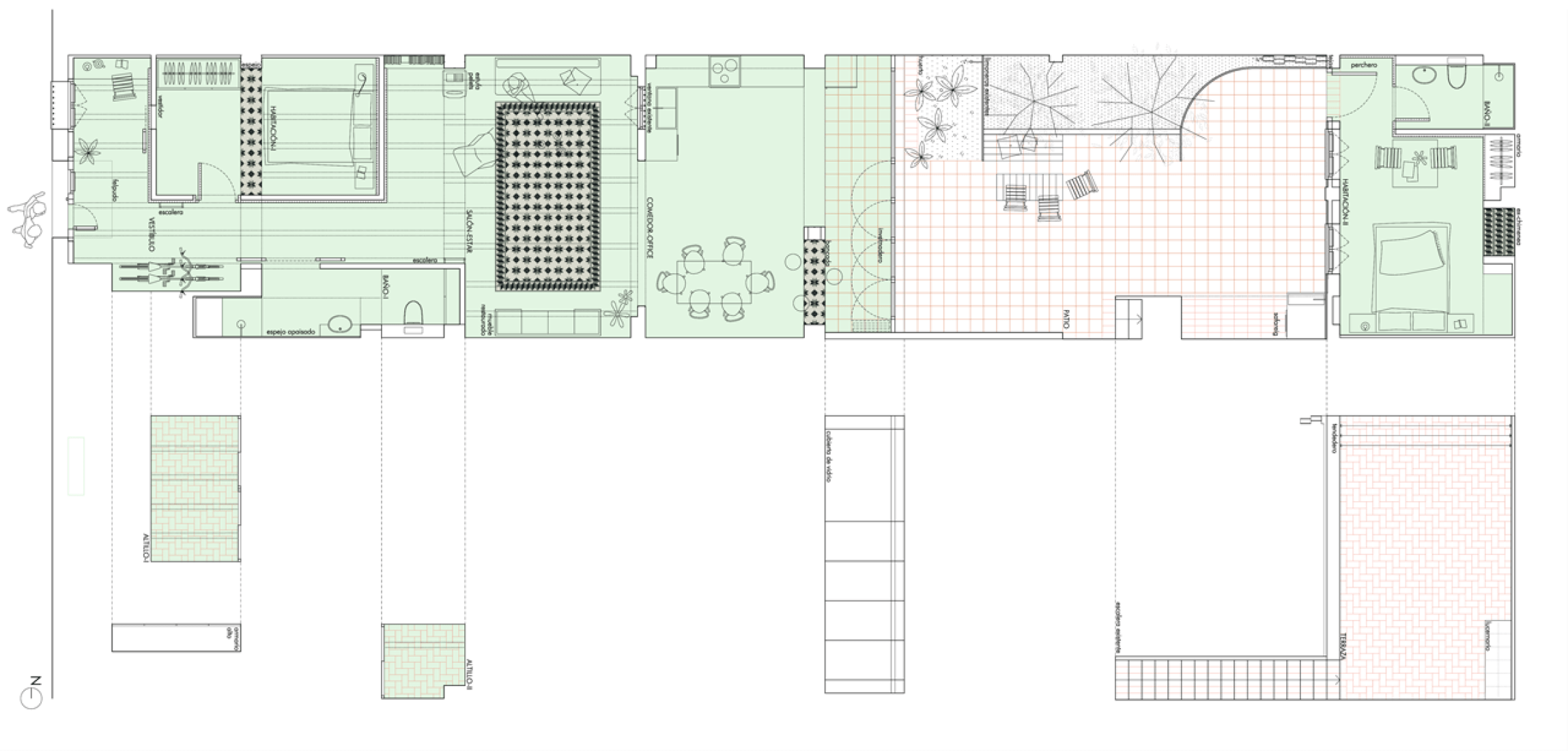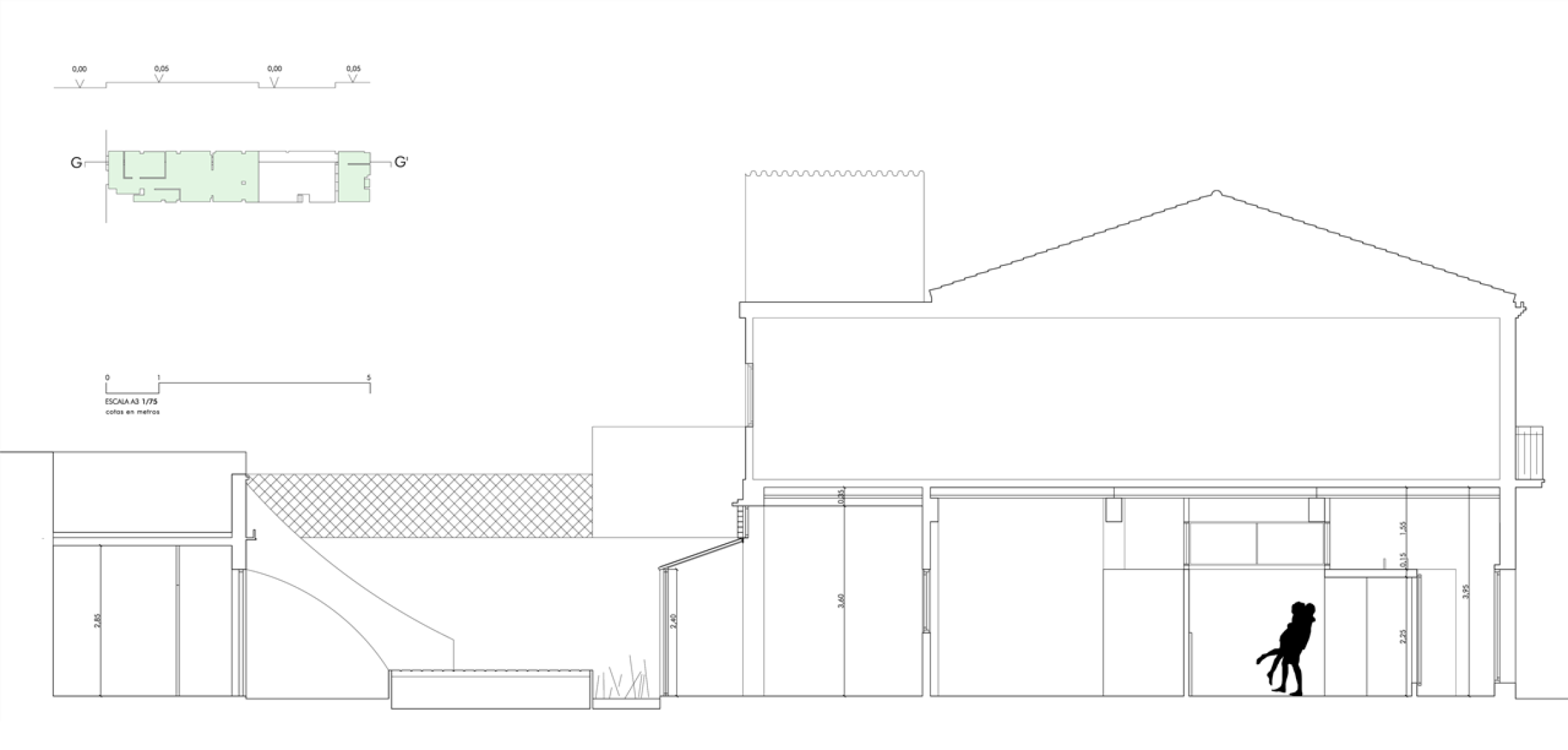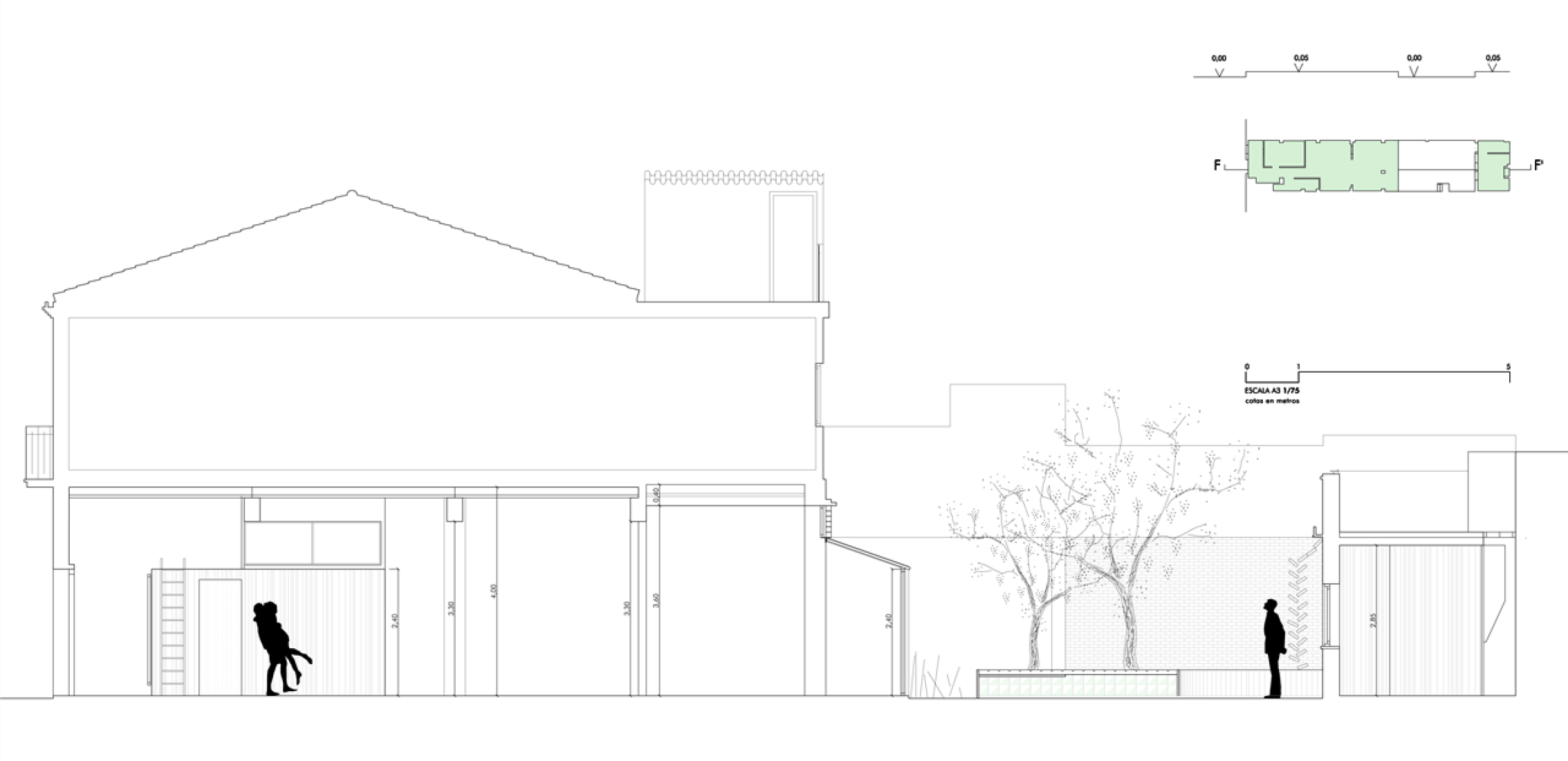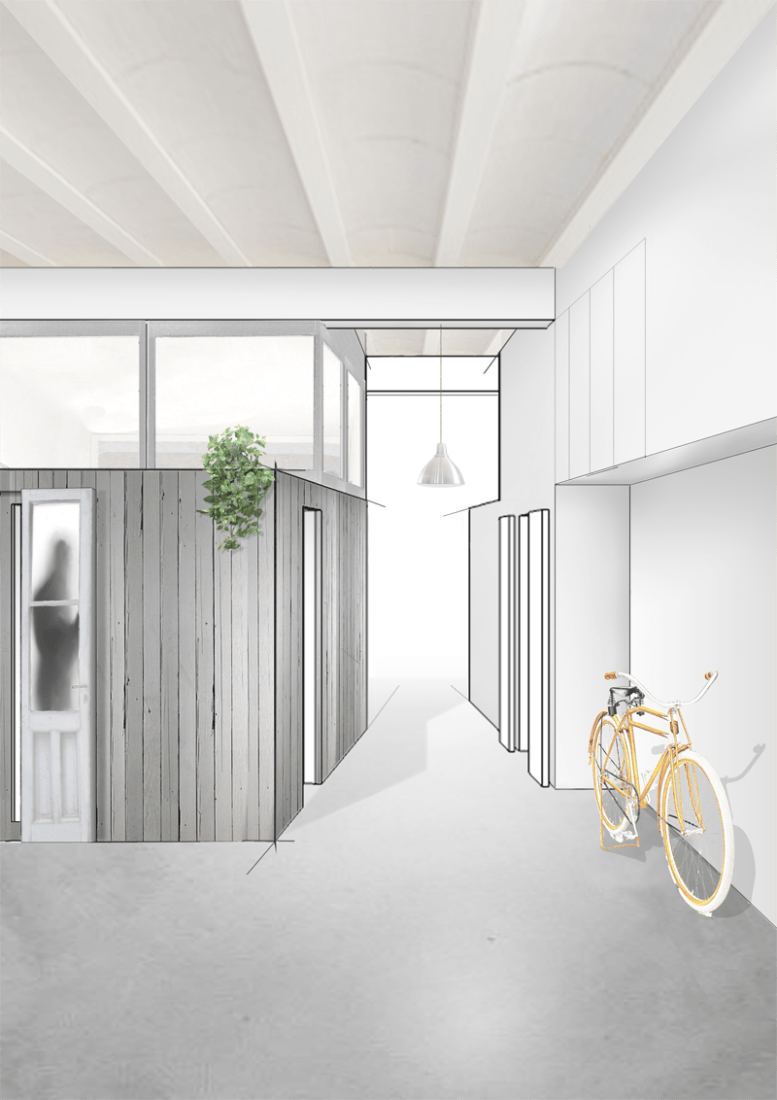The Cabanyal, whose historical center is of cultural interest since 1993, is undergoing a process of architectural and social degradation accelerated since 2010, when licenses for housing rehabilitation were suspended until this summer, when the ban was lifted. Here is located the total restoration of this house-yard designed by architect David Estal, an intervention that could be seen as isolated in a neighborhood that cries out for a proper special plan, but it certainly is a great example of the tremendous potential of the neighborhood.
Description of the project by David Estal.
The house is located on a plot between party walls in the Cabanyal historic neighborhood, in one of the longitudinal North-South streets parallel to the sea. It is a complete rehabilitation of a courtyard house from 1925, East-West oriented, which takes advantage of cross ventilation and direct access from the street, virtues of the urban maritime plot. Its long rectangular shape (27.7 x 5.4 m) allows a sunlit patio (or yard) with two lemon trees, which articulates the main room of a smaller piece located at the bottom of the plot, previous warehouse or buttons workshop, on which there is a terrace which is accessed from the courtyard by a ladder attached to the dividing wall. The total area of the intervention is 150 m2 of which 106 m2 are built, with an intervention that respects the pre-existing volumetric surface.
After the demolition, we investigated the previous constructive progression of the house according to the need for more rooms, and the construction of a second floor in the 50s, which replaced the gabled roof and double midship typical of traditional housing, for the current two floors supported by a new reinforced concrete structure (something new for the time and used as isostatic wooden structure), which led to three midships with solid brick pillars. Subsequently, the typical lateral element of the kitchen (hearth) would end up closing up, creating four midships, darkening the interior spaces, and constructing a volume in the courtyard to house the bathroom. As a result, the main challenge of the performance was to introduce natural light into the house and make it warm and cosy.
Consequently, the basic idea of this renovation, showing the built traces and without an orthopedic restoration, has consisted in recovering those elements linked to the lifestyle of the Cabanyal neighborhood, strengthening the relationship with the street, the cross ventilation, the centrality of the courtyard and the original height (3 to 4m) by Mediterranean materials that contrast the warmth of the finishings, the constructive simplicity and traditional textures with a contemporary proposal with a more open space than the previous state. All this has been possible thanks to the complicity between client, builder, architect and neighbors in a neighborhood that undoubtedly deserves this restoration with a renewed optimism: for what it was, what it is and what will be and for what so many citizens have fought for.
CREDITS. DATA SHEET.-
Architect.- David Estal Herrero.
Partner.- Juan Pablo Perales Marhuenda, architect.
Client.- Peter Schwanewilms and Lisa Ring.
Constructor.- Ensencon.
Location.-El Cabanyal, Valencia.
Date.- May 2014.

